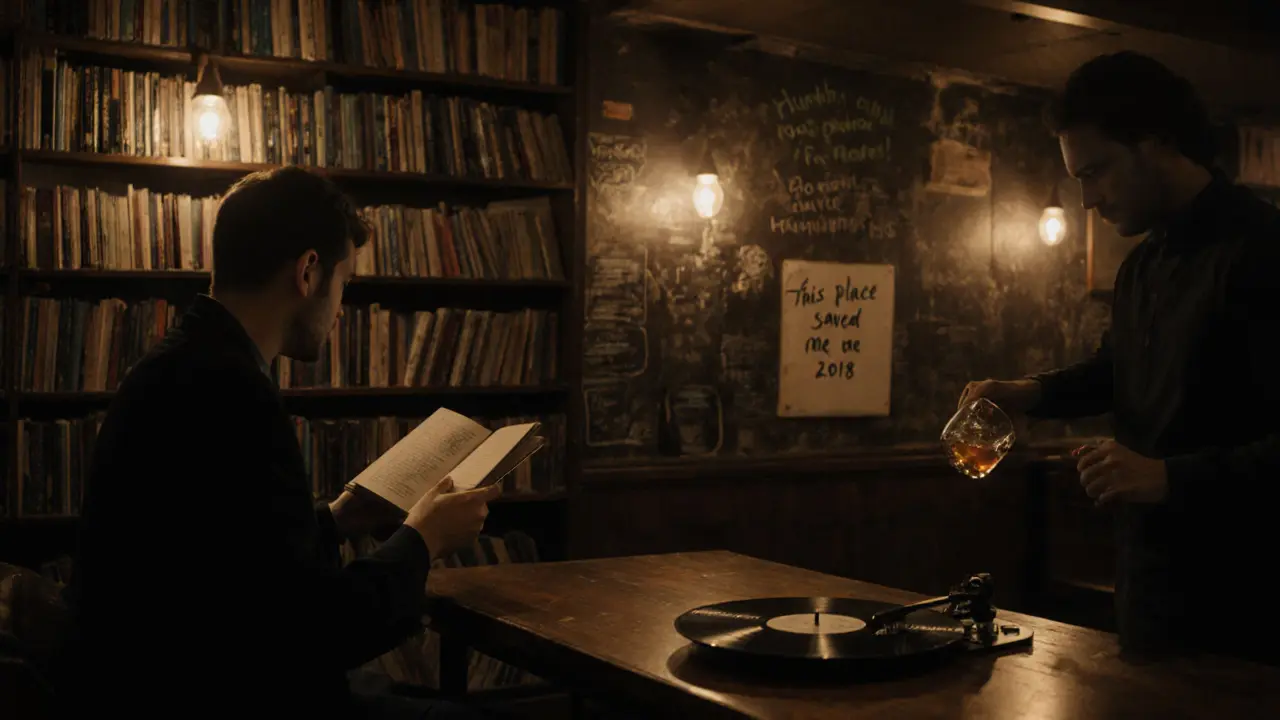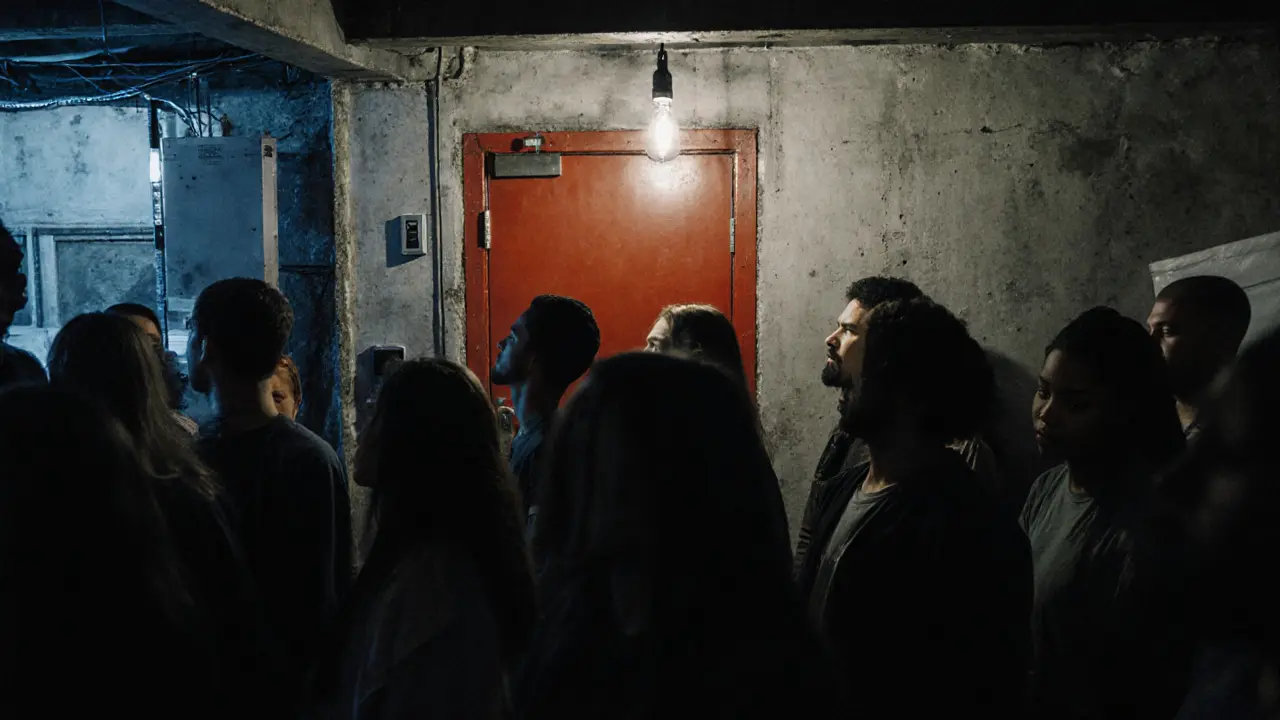The Best Nightlife in London for Culture Lovers
 Nov, 8 2025
Nov, 8 2025
London doesn’t just have nightlife-it has nightlife that breathes history, art, and raw creativity. If you’re the kind of person who wants to hear jazz in a 1920s basement, debate philosophy over craft gin in a converted chapel, or dance to experimental electronic beats in a disused tube station, London delivers. This isn’t about flashy clubs or tourist traps. It’s about spaces where culture isn’t just played in the background-it’s the main act.
Where Jazz Still Lives in the Dark
Don’t expect polished stages or velvet ropes at Vortex Jazz Club in Dalston. This is where the music doesn’t just play-it breathes. The room smells like old wood, cigarette smoke from decades past, and the faintest hint of whiskey. Musicians here don’t perform for applause; they play because they have to. You’ll hear avant-garde saxophonists from Nigeria, piano trios from Brooklyn, and local drummers who’ve been playing since they were sixteen. No cover charge on Tuesdays. Just a small donation box and a room full of people who know when to be quiet.
There’s no menu of drinks with fancy names. Just beer, wine, and a single gin and tonic made the way your grandfather would’ve ordered it. The owner, a retired sound engineer, still tweaks the acoustics by hand. He’ll tell you, “If you can hear the ceiling, you’re sitting in the wrong spot.”
Bookshops That Turn Into Bars After Midnight
At Bar Luce inside the old London Review of Books warehouse, you’ll find shelves stacked with out-of-print poetry, first editions of Sylvia Plath, and zines from East London collectives. By 10 PM, the lights dim, the books stay on the shelves, and the bar opens. No TVs. No playlists. Just vinyl spun by a local DJ who used to run a punk fanzine in the ’90s.
They serve single-origin coffee until 1 AM, then switch to small-batch vermouth and bitter ales. You can sit at a wooden table, read a book you just bought for £5, and strike up a conversation with someone who just finished writing their first novel. The walls are covered in handwritten notes from patrons: “This place saved me in 2018.” “Wrote my wedding vows here.”

The Underground Clubs That Don’t Exist on Google Maps
Some nights, you’ll find yourself in a basement beneath a laundromat in Peckham. No sign. Just a red door with a buzzer. You text a code you got from a friend of a friend. Inside, it’s a warehouse turned into a sound lab. Artists from Ghana, Jamaica, and the Congo remix field recordings of street vendors, church choirs, and train brakes into hypnotic loops. The crowd? Mostly artists, curators, and students from Goldsmiths. No one’s taking photos. No one’s trying to be seen.
These spaces aren’t listed on Time Out. They’re passed along like secret recipes. The last one, called The Hollow, was hidden behind a false bookshelf in a secondhand bookstore in Camden. It closed last year-but not before hosting a week-long performance where poets read in 17 languages while a cellist played over live feedback from a broken radio.
Opera, Poetry, and Pints in the Same Room
At The Old Blue Last in Shoreditch, you can hear a baritone sing Puccini while someone next to you argues about postcolonial theory. The venue used to be a pub built in 1840. Now, it’s a hybrid space: open mic nights on Mondays, experimental opera on Thursdays, and pub quizzes with questions only a PhD candidate would know.
The staff don’t wear uniforms. They’re musicians, poets, and grad students who work here because they love the chaos. On Friday nights, they turn the back room into a poetry slam where winners get a free pint and a hand-stitched chapbook from a local press. Last month, a 72-year-old retired librarian won with a poem about losing her hearing and learning to feel music in her bones.

Where the Art World Drinks After Hours
After the Tate Modern closes, the crowd migrates to Barbican’s The Curve Bar. It’s not fancy. No chandeliers. Just concrete, steel, and shelves full of art books. The bartenders know every artist who’s shown at the Barbican Centre. They’ll pour you a Negroni and tell you which installation you missed because you left too early.
On the third Thursday of every month, they host “Art After Dark”-a quiet, uncrowded hour where curators and emerging artists talk about their work over cheap wine. No slideshows. No pitches. Just conversations that last until 2 AM. You might hear someone explain why they used rusted bicycle chains in their sculpture. Or why they recorded the sound of a London Underground train to sample into a new composition.
Why This Kind of Nightlife Matters
London’s cultural nightlife isn’t about being seen. It’s about being changed. You don’t come here to check off a list. You come because you want to hear something you’ve never heard before. To meet someone who thinks differently. To sit in silence while a musician plays a note that makes your chest ache.
These places survive because they’re not trying to be profitable. They’re trying to be alive. They’re run by people who’d rather lose money than lose the soul of the space. They’re the reason London still feels like a city where art isn’t just for museums-it’s for midnight conversations, for shared silence, for the kind of connection you can’t find on Instagram.
If you’re looking for neon lights and bottle service, go somewhere else. But if you want to feel the pulse of a city that still believes in the power of a single note, a single line of poetry, a single quiet moment in a dark room-you’ll find it here.
What time do cultural nightlife spots in London usually close?
Most cultural venues in London stay open until 2 or 3 AM, especially on weekends. Jazz clubs like Vortex and poetry bars like The Old Blue Last often run until 3 AM on Fridays and Saturdays. Underground spaces might close earlier, around midnight, or stay open past 4 AM depending on the event. Always check the venue’s social media-many don’t update their websites.
Are these venues expensive?
Not usually. Most cultural spots charge £5-£10 for a drink, and many have free entry or donation-based cover. Jazz clubs often have no cover on weekdays. Book bars like Bar Luce sell books for under £10, and you can get a pint for £6. You won’t find £20 cocktails here. The value isn’t in the price-it’s in the experience.
Do I need to dress up for cultural nightlife in London?
No. People wear jeans, hoodies, vintage coats, or even pajama pants. The rule is simple: be comfortable and be respectful. No suits, no designer logos, no trying to look like you belong. The crowd cares about what you say, not what you’re wearing.
How do I find hidden cultural venues?
Follow local artists on Instagram, join mailing lists for indie galleries, and subscribe to newsletters like Time Out London’s Hidden Gems or Londonist’s Underground. Word-of-mouth is still king. Ask a bartender, a bookseller, or a gallery assistant where they go after work. They’ll point you to the real spots.
Is it safe to go to underground venues alone?
Yes, if you use common sense. These spaces are usually run by artists and locals who know each other. They’re quieter and more aware than crowded clubs. Don’t go to places with no visible entrance or no one at the door. Trust your gut. If it feels off, leave. Most of these venues have a strong community vibe-people look out for each other.
